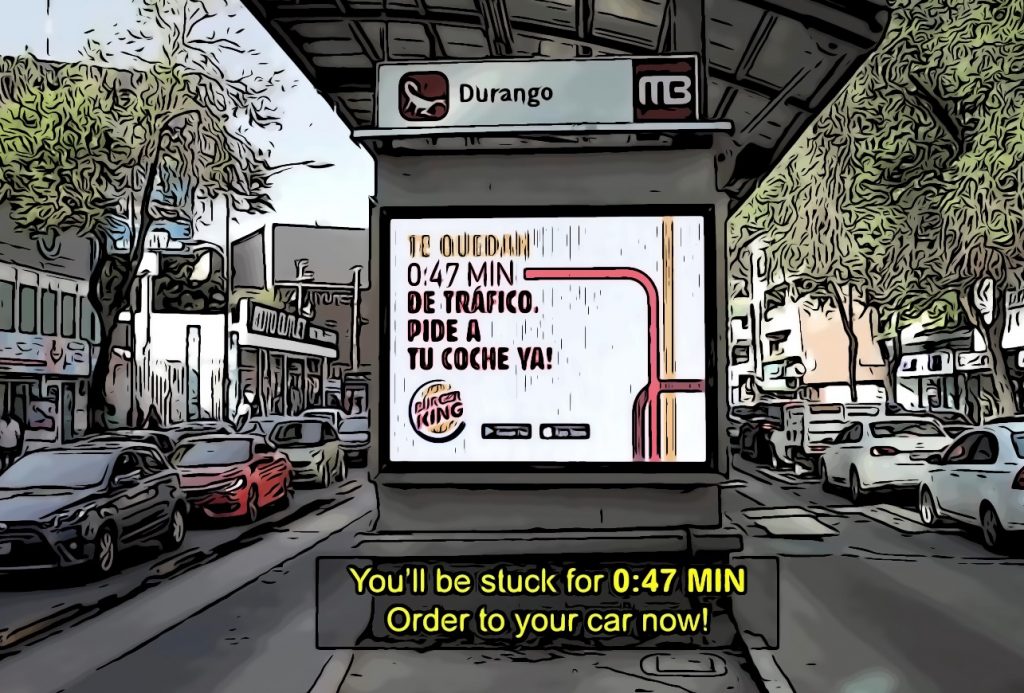It’s high time we took another look at Geofencing. The technology has been a powerful way to reach consumers in the best moment in the right locations. But how have the capabilities changed, and how can marketers best use the technology as we move into a new decade?
Table of Contents
What is Geofencing?
Geofence marketing is a form of location-based marketing where a geographic boundary is placed around a point of interest. When a mobile device enters this area, the geofence can trigger several different events. These triggers are usually the delivery of some kind of advertising. Historically this has been via SMS marketing, but increasingly this process has developed to include push notifications and even fit seamlessly into the programmatic advertising stack.
A definition of geofencing in 2023
Geofencing is a technology that has been around for a while. It is always developing, and marketers are finding intuitive new ways to use it effectively.
Geofencing is useful for instant location-based advertising. But its use can move beyond this simple moment marketing. Geofencing can be used to identify and build large addressable audiences over time. As we’ll see, it can even have a role in retargeting, attribution, and other location-based insights.
How does geofencing work?
Geofencing mostly consists of the following steps:
- Identify a geographical radius around a real-world location.
- Set up a geofence (virtual barrier) around the location.
- When a device enters or exits, an event can be triggered.
What are the limitations of geofencing in marketing and advertising? (What you can’t do)
Not all geofencing technology is perfect. Sometimes a device registers inside a geofence when, in fact, it isn’t. Other times the geofence is set around a store, but in busy cities and other hard to measure locations, sometimes this means that devices are falsely attributed to the physical location.
These issues mean that geofencing has to be accurate. To provide maximum value to consumers, ads have to be relevant. Directly sending everyone that walks past a store, a message isn’t a viable option.
At Tamoco, we are obsessed with accuracy. We want our customers to be sure that a device is being targeted because it actually visited a location. So we build a solution that understands more than a single data point when calculating if a device is inside a POI or geofence.
Geofencing also has potential scalability issues. Being so highly targeted and in the moment means that the addressable audience in a geofence campaign might be quite small.
A geofencing campaign might work across McDonald’s stores, for example, but this is because there are a significant number of them. When dealing with smaller campaigns, the reliance on your own audience might not be enough.
For this reason, it might be better to target a type of consumer or build a segment over time that consists of visits.
What you can do with (better) geofencing
Simple geofencing push is no longer as powerful as it used to be. With better accuracy and a slightly different approach, you can still use location to achieve convincing results. Let’s see how.
Marketing and advertising
Targeting
Geofencing has traditionally been used to target devices as they enter a geofence. The brand would place a radius around its stores, for example. When a device using their app entered these areas, they would be sent a message encouraging them to visit the retail location.
As we’ve already mentioned, this isn’t always accurate in practice. Larger geofences are likely to include devices that aren’t nearby or not inside a competitor store. This can render the advertising message irrelevant.
Another potential issue with geofence targeting is the lack of audience scale. If you are using the technology with your own application, a large audience is required to send messages on the scale needed to shift the needle.
Better geodata means that you can look at device across how it behaves over time. In the moment targeting is effective, but building up a detailed profile and using this to build segments provides you with more reach and better accuracy.
Using location data for geotargeting means that you can target more devices outside of your first-party audience. You can read more about location data for targeting here.
Measurement geofences
Another benefit of using location-based targeting is the ability to measure the effect of location-based marketing or geofencing campaigns. For example, if you target devices based on their proximity to a location, how do you know if they performed the desired goal, especially if this is in the real world.
Using location data to target means that the same technology can be used to confirm if devices visit a retail location after being delivered any kind of advertising. Better accuracy means that you can be certain of a venue visit, rather than just a person walking nearby.
So using accurate POI geofences or polygons can help you to attribute your advertising campaigns. This extends beyond your geofencing campaigns to include your digital advertising, out oh home campaigns, and much more.
The future of geofencing marketing
Geofencing marketing v location targeting
Geofencing in marketing can still be an effective way to reach consumers in the best possible moment. But for brands that want to identify larger groups of relevant consumers, this isn’t always the best solution.
Instead, location-based audience segments offer the best of both worlds. These segments are still based on real-world locations and therefore carry real-world intent. They are scalable because these segments can be built over a longer time period.
Another benefit of these types of campaigns is that you can activate segments directly in your marketing channels.
This means that you don’t need to rely on push in apps. You can use the entire programmatic marketing stack to target users wherever they are.
About Tamoco’s location segments
Our segments provide more scale for marketers looking to do better location targeting. Our first-party data focuses on accuracy, allowing marketers to do more precise geographical based campaigns.
Activate location-based segments today.
James is the head of marketing at Tamoco




Leave a Reply